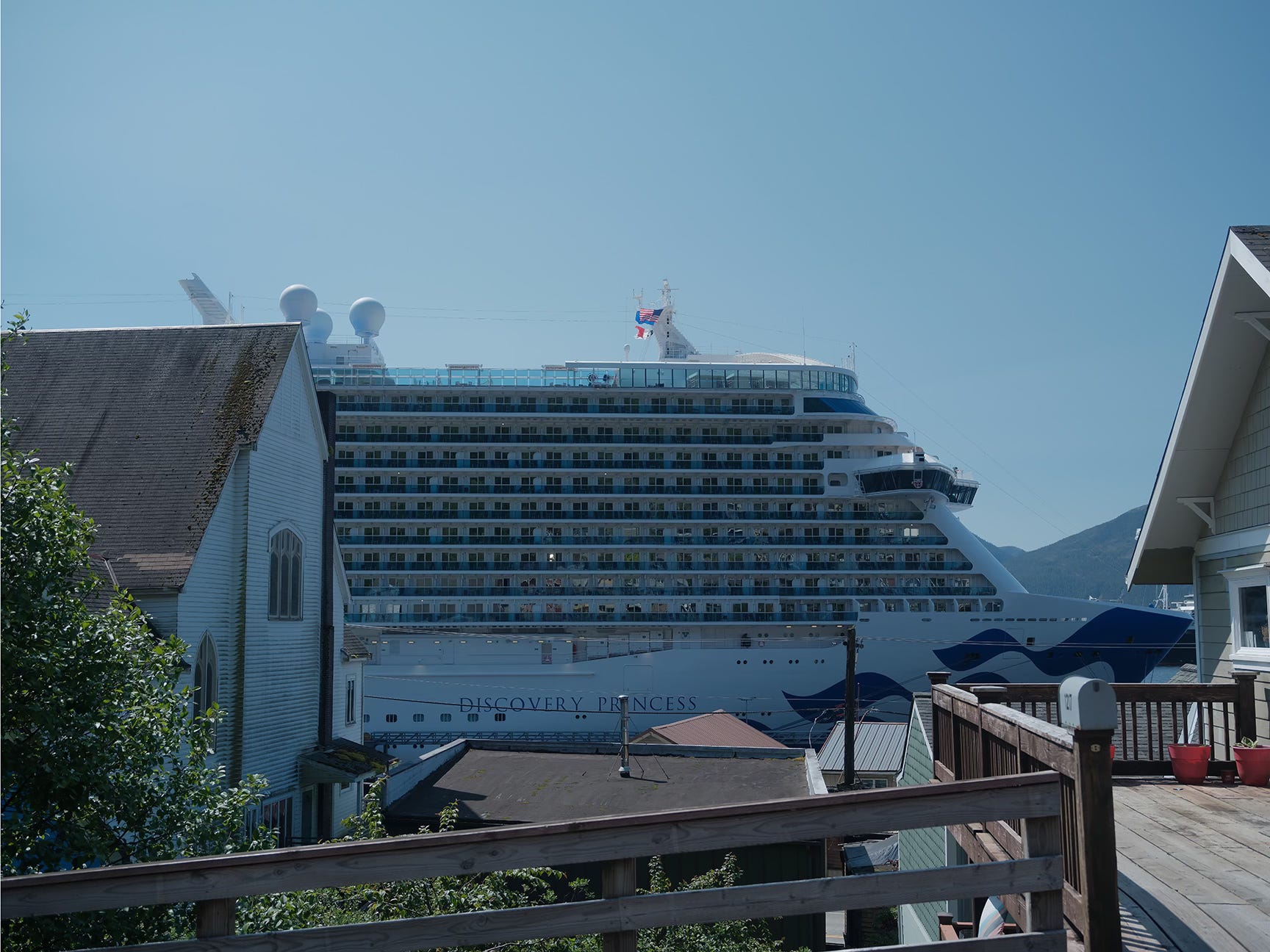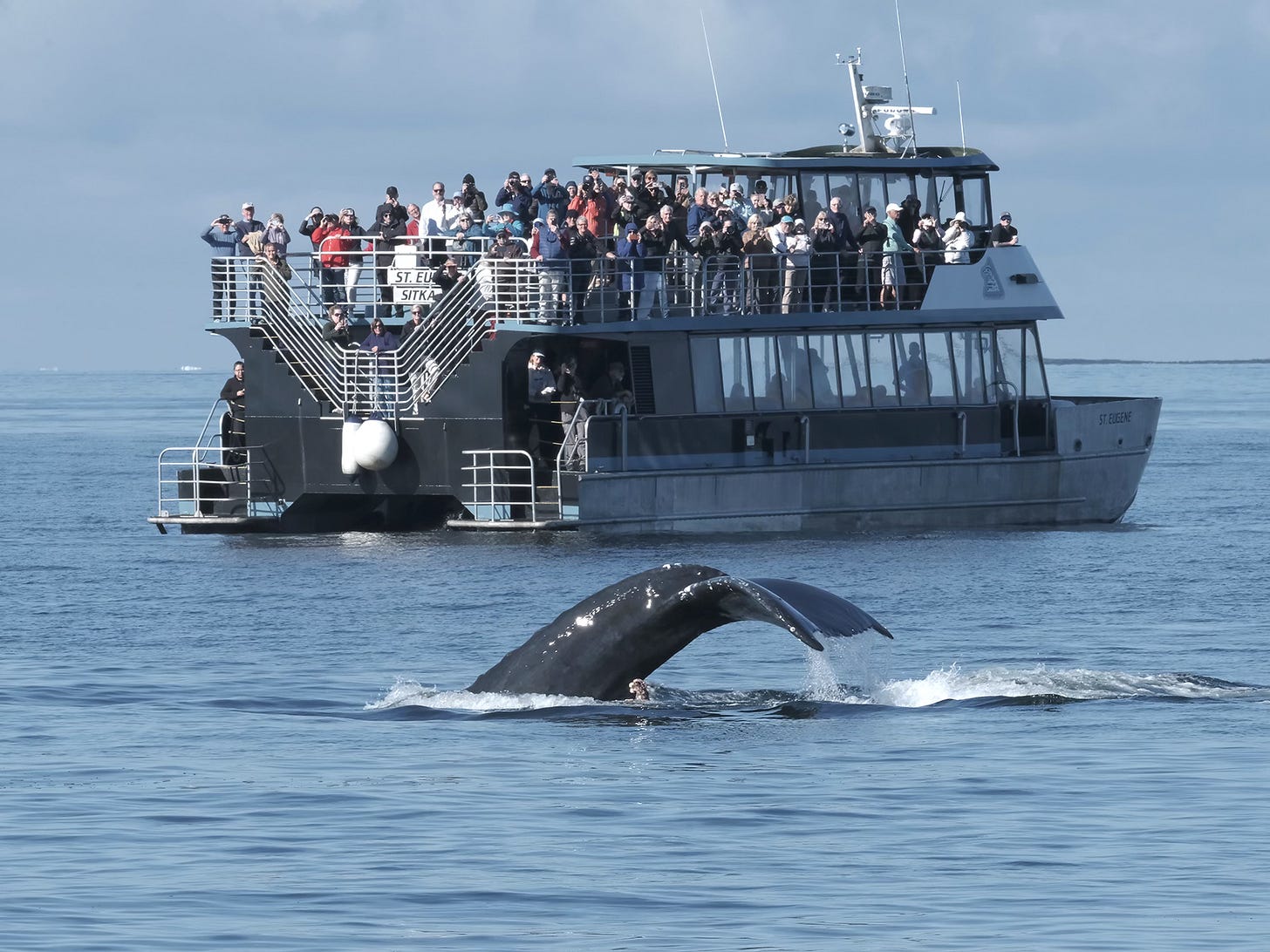The New Goldrush
Tourist Season in Alaska
Note: It’s been a while since I dropped anything on Substack. In fact, I’ve taken my older blog posts down for now. But here and now seems appropriate to share some of what I’ve been photographing, experiencing, and thinking about in the summer of 2025.
Ketchikan, Alaska (population 8,000).
Every day during the summer tourist season, several giant cruise ships may dock here and as many as 20,000 tourists — and, in some cases, almost as many crew — spill out into the town. A majority of the travelers seem to be wealthy senior retirees from the US.
Most of the crew members are younger. They hail from countries around the world, primarily from southern Asia, some from Africa.
Ketchikan is just one port in a string of small cities and towns that line the coast along the heavily marketed "Inside Passage" from Seattle to Vancouver to Anchorage. And every little port, which was once a traditional fishing village, or a frontier mining town, or military outpost is now a bustling and crowded tourist center staffed by thousands of American seasonal workers, most of whom come from the lower 48 states.
Dock areas are filled with Alaskan-themed restaurants, trendy outdoor gear stores, colorful souvenir shops, carefully curated local tours, and high end jewelry sellers that all seemed designed to extract as much wealth from the tourist throngs as possible. An orchestrated parade of motor coaches and sight-seeing vans line up in numbered stalls. They stand ready to carry the scrambling passengers off to look for whales or view captive wildlife, see cultural artifacts, or kayak with a guide on the icy waters. Packaged salmon is for sale everywhere. If one doesn’t want the simple smoked flavor, there’s chipotle, maple, honey and bourbon, blueberry, jalapeño, and more.
It seems like most passengers are seeking that true Alaskan experience, but (and I’m generalizing here, because there are exceptions) many of them want only to see a glacier without getting wet. They hope to see bears, but only from a distance, and they want to photograph a breaching whale up close. They purchase native art without ever meeting the artist or learning where they are from. At cocktail hour, common topics of conversation include comparing dining experiences on board ship, discussing which travel company is best, and debating where to go next in the world.
And the world seems far away. On board, everyone is insulated from the news of the day, safely ensconced in a bubble of privilege and protection.
This summer, I've spent time working as a naturalist on board an Inside Passage cruise ship (one that is smaller than the ones pictured, but still plenty big). It’s been a total of almost 6 weeks. I hope I don’t seem too harsh and cynical here. I’ve met some great people on these trips, some of whom may be life long friends. We shared some special memories. My ship began to feel like home over time.
Most of all, I've seen some amazing wildlife and beautiful scenery from a unique perspective and for that I am thankful. But I'm also left with some firm and obvious truths about the sustainability and authenticity of this kind of experience.
My summer in Alaska and British Columbia became a search for authenticity when so much seemed overwhelming to me. Over the next few weeks, I’ll share more photos and stories of some of the things I experienced.








Joel , i look forward to your further obsrvations. Good work. Great images too
I’m looking forward to hearing more as well, especially after becoming disillusioned on a small-group, curated trip we took to Patagonia this last January. The landscape was amazing, and we went on a number of longer hikes (real ones: 12 miles, 3000 vertical), but it all felt too curated, too controlled, and (as you said) the tourists along for the ride were most interested in comparing notes on what their money had bought them before, now, and in the future. We decided we wouldn’t be traveling this way again.